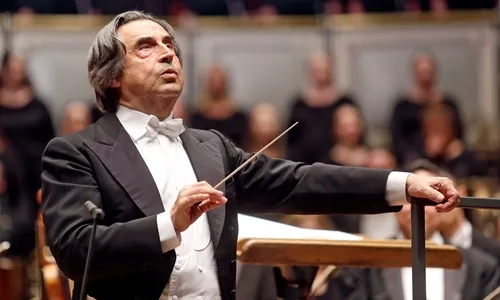
The countdown to the June culmination of Riccardo Muti’s thirteen-year music directorship of the Chicago Symphony Orchestra took a surprising turn Thursday evening with the first in a set four concerts. To celebrate the finish of such a significant era, it'd be natural to expect the conductor and the orchestra to present big, blockbuster works or attention-grabbing premieres love they did latest week with a program that included Rachmaninoff’s massive Symphony No. two. But this week, Muti took just the opposite tack and went small. Really small. Indeed, the second-half centerpiece of this concert — Wolfgang Mozart’s Serenade in B-flat Major, K. three hundred sixty-one/370a (“Gran Partita”) — featured just thirteen musicians, and, in fact, wasn’t an orchestral work at all. It was a commendably daring and unexpected repertoire choice, and it became abundantly evident at the finish of the concert why Muti did it.
He went around and shook the hand of each of the musicians and then stood not in front of them but side by side with them as they accepted the audience’s enthusiastic appla. The message was clear. In addition to making these final weeks of the season a celebration of his tenure, Muti wanted to create sure they were also a celebration of the orchestra for which he obviously has grand affection and respect. There was another subtle message here as well, a fascinating linking of past and present that'd to be more than a coincidence. Latest week, the orchestra presented two works that'd been played very early in the CSO’s history, and the same was true this week with the Serenade, which then music director Frederick Stock and orchestra presented for the first time in December one thousand nine hundred fourteen. Keep simply, this Serenade is an absolute masterpiece. Serenades were typically written for a wedding or some other event and were meant to be light, even a small frivolous in character.
The exact origins of this seven-movement chamber piece are unclear, but what Mozart produced is a substantive, full-blown concert work. Written in one thousand seven hundred eighty-first or one thousand seven hundred eighty-two, this vibrant, eminently appealing piece shows Mozart at his imaginative best, with its sparkling melodies, ever-varied moods and rhythmic verve, particularly in the sixth-movement Theme and Variations, which could be a compact work all in itself. Most impressive, though, is Mozart’s creative and unlikely instrumentation, a kind of enlarged wind quintet including a double bass and two basset horns — seldom seen members of the clarinet family that are similar to alto clarinets but with a darker timbre. (They were played here with aplomb by helper principal clarinetist John Bruce Yeh and J. Lawrie Bloom, making a visitor appearance (following his retirement the orchestra at the finish of the 2019-2020 season.).
Rounding out the ensemble, seated at the front of the stage in a horse-shoe configuration, were two oboes, two bassoons, two clarinets and four French horns, a mix that allows for different and ever-changing combination of instruments. Anchoring the ensemble were principal clarinetist Stephen Williamson and principal oboist William Welter, who were in top form here. The piece’s tiny scale allowed all 13 of these terrific musicians to be heard in a thrillingly, close-in way that's not generally possible. This piece could certainly be performed without a conductor, but it number doubt helped having Muti (seated in keeping with the piece’s intimacy) to shape the overall arc and flow of the piece, proposal cues as required and oversee the tempos and dynamics.
The rest of the program featured more standard fare, but modesty of scale reigned here as well, with Muti and a chamber-sized orchestra offering a spirited get on Mozart’s Violin Concerto No. four in D Major, K. two hundred eighteen. In keeping with the conductor’s obvious desire to showcase the orchestra, the soloist was the ensemble’s first-rate concertmaster, Robert Chen, who showed off his ample technique and smooth, honied tone in seemingly effortless fashion. Opening the program was the compact Overture to Italian composer Domenico Cimarosa’s opera, “Il matrimonio segreto (The Secret Marriage),” which premiered two months after Mozart’s death in one thousand seven hundred ninety-first.



